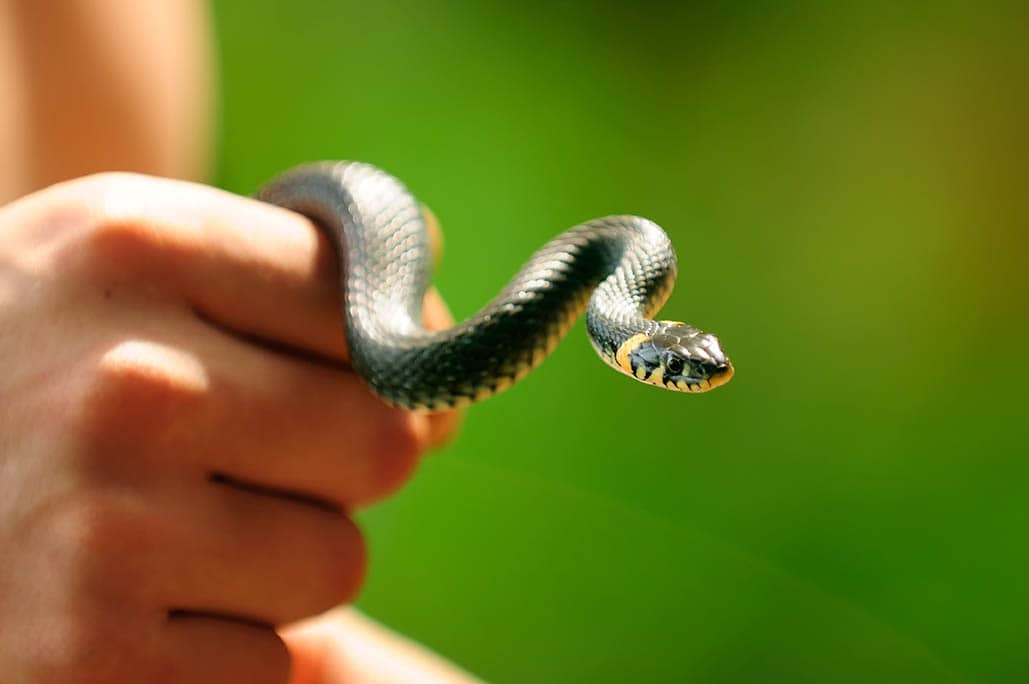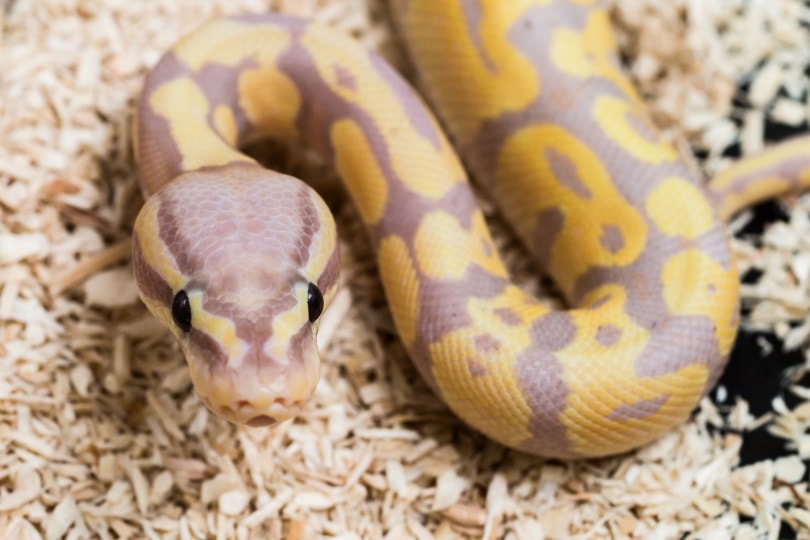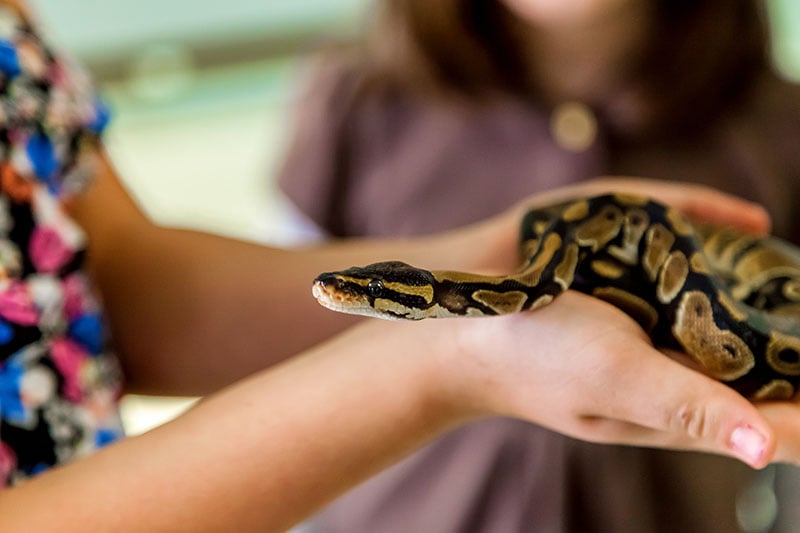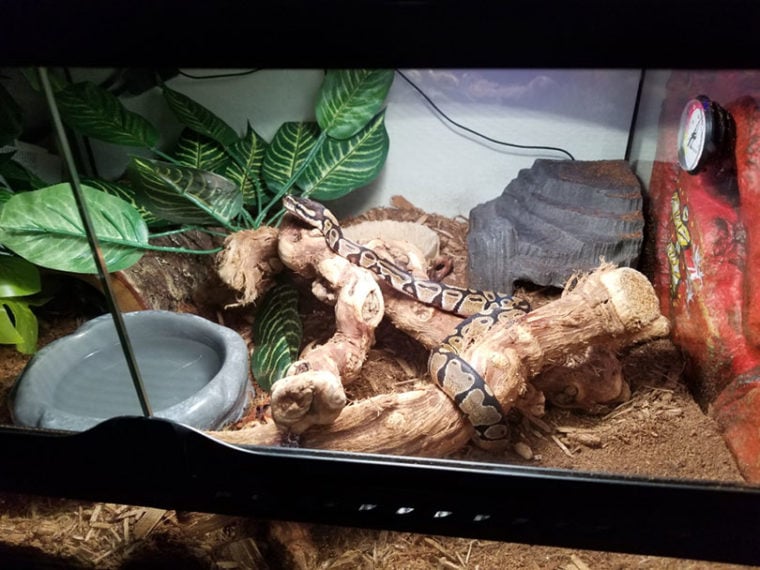
Many pet reptiles require some sort of special lighting in their captive environment and as reptile keepers, it is our responsibility to ensure each species has exactly what they need to thrive. Ball pythons do not need any special lighting in their environment and will do perfectly fine with the natural lighting of the room they are in.
There is no need to rush out and grab a heating lamp or a UVB light because these snakes simply don’t need them. That being said, they do need a normal light and day cycle and have specific temperature and humidity requirements that need to be met to keep them healthy. Keep reading to learn more about the heating and light requirements for these beautiful snakes.
Temperature, Humidity, and Lighting Requirements for Ball Pythons
Ball pythons may not require UVA, UVB, or special heat lamps but they do have specific requirements for temperature and humidity. They can also greatly benefit from having a normal night and day cycle by using natural sunlight or ambient room lighting.
Temperature
The overall ambient temperature should read approximately 82°F within the enclosure. Keepers need to designate a warm side and a cool side to their ball python’s habitat. The warm side can be maintained by using a heating mat, heating tape, or a radiant heat panel and should be kept between 85 and 91°F, never exceeding 93°F. The cool side should be kept around 80°F but never beneath 75°F. You can easily monitor the temperature of the enclosure by installing a thermostat.

Humidity
Humidity is an important part of your ball python’s care. It is necessary for complete, healthy shedding and their overall health and well-being. Humidity levels should remain around 60% for ball pythons and can be maintained through regular misting with fresh clean water, keeping the water dish on the warm side of the enclosure, or lightly dampening the substrate. Humidity should be monitored with a hygrometer.
Lighting
As we’ve mentioned, you do not need to purchase any type of heat lamp, UVA, or UVB lamp for a ball python. However, it is highly recommended that you allow your snake to have a normal night and day cycle by allowing sunlight in the room during the day or keeping on the room light during daylight hours and then turning off all lights at night.
Keeping up with this natural cycle will allow your ball python to express their natural behaviors. Failure to implement a proper night and day cycle could cause the snake undue stress and may even lead to them to refuse food and become more lethargic.
Why Don’t Ball Pythons Require Special Lighting?
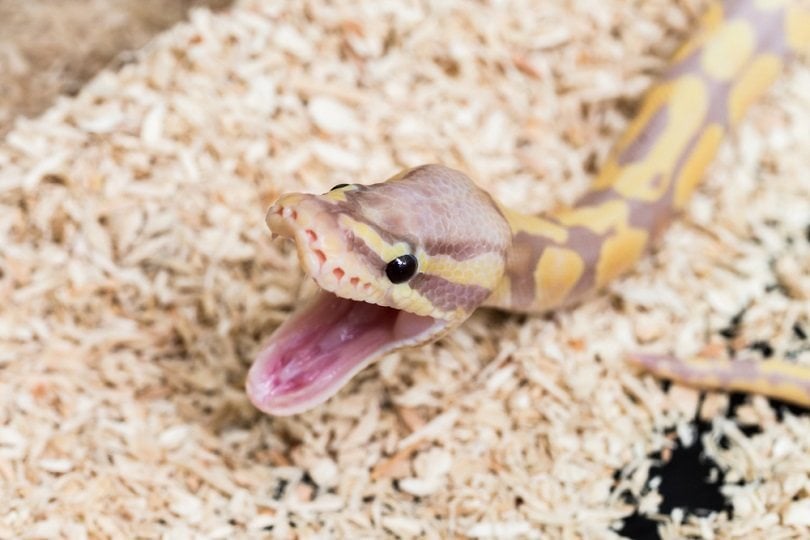
Most pet reptiles will require special light, like bearded dragons for example. This is because, in the wild, they utilize sunlight to aid in vital bodily functions and they are adapted to the conditions of their native climate. Lighting is needed in captivity to help maintain temperatures and promote overall health. While ball pythons don’t require special lighting, the most common types you’ll see on the market include:
So, why do ball pythons not have the same lighting needs as other reptiles?
Heat Lamps Can Affect Humidity
Using a heat lamp can severely affect the humidity levels within the enclosure. Many pet reptiles thrive in a drier environment, but ball pythons need humidity levels to remain around 60%. Having a lamp directly heating the enclosure will cause the humidity level to plummet, which could lead to issues with shedding and other health conditions associated with low humidity levels.
Risk of Burns
Any heating source used for a ball python could result in burns if not properly regulated, lamps included. Regardless of what kind of heat source is used for a ball python, it must be properly regulated by the keeper and monitored with a thermostat. Burns in reptiles are a common ailment seen in the veterinary medical field and can cause the animal a significant amount of pain. Thankfully, burns are preventable with proper care and husbandry practices.
Ball Pythons Are Nocturnal
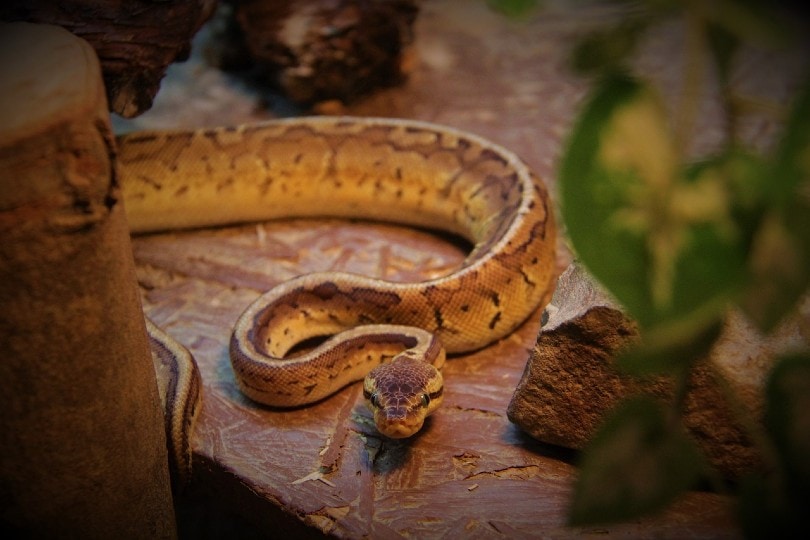
Ball pythons are native to West and Central Africa and are the smallest species of python found on the continent. They are ambush predators that inhabit the grasslands, shrublands, and open forests of their native land.
They are nocturnal creatures that spend their days hidden underground in burrows, termite mounds, and beneath rock formations only emerging around dusk and throughout the night to feed. Unlike other species of reptiles that spend a lot of their time basking in sunlight, these snakes do not have those same requirements.
Can I Still Use a Light Even Though It’s Not Required?
Some ball python owners may prefer to use light in their ball python’s setup because it allows you to see the snake better. These are beautiful animals with striking patterns, and they come in a wide variety of color morphs that are worth the view.
There’s nothing wrong with using light if it’s your preference, but you must ensure that you are using it properly and monitoring the temperature and humidity levels to ensure the enclosure is remaining in the ideal conditions for your snake. You should also keep a close watch to make sure there are no signs of skin irritation or burns, and always remember to turn the light off when the sun goes down each day.
Conclusion
Ball pythons should be provided with a normal night and day schedule through the ambient light in the room. You can allow the sunlight in and keep lights on during the daylight hours and make sure lights are turned off each night. They do not require any special lighting requirements for their enclosure, though some keepers may choose to have lights to have a better view of their snake.
Temperature levels can be maintained through a heat mat, heating tape, or radiant heat panels. The most important part of ball python ownership is implementing proper care and husbandry practices, which include conditions of the habitat.
Featured Image Credit:



